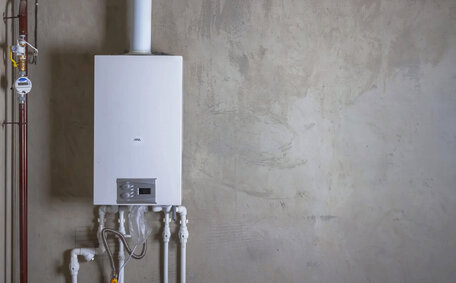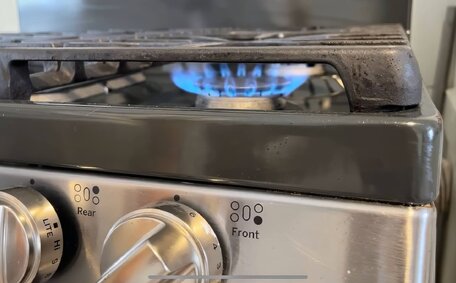What Causes Low Water Pressure?
There are several common causes of low water pressure in homes:
- Corroded or mineral build-up in pipes - Over time, sediment, rust, and mineral deposits can restrict flow through your pipes.
- Faulty pressure regulator - A malfunctioning pressure regulator can result in insufficient pressure for your home’s water system.
- Issues with water supply - Problems with the municipal water supply system, like breaks, leaks, or high water usage, can reduce pressure.
- Partially closed supply valve - Verify that your main water shutoff valve is entirely open to ensure maximum water flow.
- Clogged water filter - Frequent filter replacement is crucial to prevent low water pressure and clogged pipes.
Low pressure may also be isolated to certain fixtures if issues like clogged aerators, kinked hoses, or a problem with low hot water flow exist, suggesting it’s time to contact your local plumber. Examining various taps can help isolate the root of your home’s low water pressure.
How to Check if You Have Low Water Pressure
Several straightforward methods can determine if your house has low water pressure:
- Monitor the water flow rate from your taps and showers - Signs of low pressure include weak flow, sporadic sputtering, or delays in achieving the desired temperature.
- Conduct a water pressure test by timing how quickly a measuring jug fills under the tap. Rates under 6-8 litres per minute from a showerhead signal low pressure.
- Check your water meter by using a water pressure gauge - Attach it to an outdoor faucet, perhaps one outside your front garden, and turn the water on. Readings below 350 kilopascals (kPa) on your pressure gauge generally signify low water pressure in homes.
- Do a bucket test - Shut your home’s stop tap and empty the pipes. Turn back on and time how long it takes to fill a bucket with 5 gallons water, as the water supply can influence this duration. If it takes more than 30 seconds to fill, this suggests your pressure is subpar and warrants further examination.
Checking all your internal taps, both hot and cold water, can help determine if the issue is with your hot water system or supply plumbing. If only your hot water taps have low pressure, it’s often due to issues with your water heater or scale in the pipes, not the main water supply.
DIY Solutions to Improve Low Water Pressure
There are several practical DIY solutions residents can try before calling a professional to address low water pressure:
- Clean or replace faucet aerators - Clogged aerators can impair water flow by blocking pipes. Soak in vinegar or replace if necessary.
- Check for leaks - Inspect your pipes, fittings, valves and taps for any leak your eyes might catch. Dripping leaks over time are an issue low water pressure can stem from.
- Flush hot water heater - Too high Sediment buildup in the tank can lead to significant restrictions and can also affect water flow. Drain any water from the release valve.
- Use a descaling solution - Run vinegar or a descaler through pipes to dissolve mineral deposits and combat hard water, thus improving water pressure.
- Adjust regulators and valves - Confirm that shutoff valves are off water when not in use, as this can optimize flow rate throughout your house when required. Ensuring your pressure can be adjusted, set regulators to 50-60 PSI.
While DIY methods are cost-effective, issues like main line breaks, pipe corrosion, or pressure exceeding 550 kPa need a professional plumber’s attention for safety.
When to Call a Professional Plumber
If DIY troubleshooting doesn’t fix the water pressure issue, it’s recommended to contact a licensed plumber. A licensed plumber can expertly diagnose and fix complex low water pressure issues in your home.
You should contact a professional plumber in these situations:
- Uncertain how to remedy persistent low water pressure even after DIY methods like aerator cleaning or water heater flushing
- Pressure is less than 40 psi, indicating very low water pressure
- Your house was built with very old piping that may be corroded and restricting flow
- The issue seems to be with the hot water system or hot water pipes only
- There are Water leak issues, breaks, or other unknown concerns
- The pressure regulator requires calibration or replacement
- There may be a need to repair the main water line
For professional assistance with low water pressure problems, contact your area plumbers at Glenhaven Plumbing on 1300 349 338 or through email. Our qualified team can pinpoint the issue and suggest optimal solutions.
Long-Term Solutions for Consistent Water Pressure
There are several effective long-term solutions that can help maintain consistent water pressure in your home:
Pressure Booster Systems
Installing water booster pump systems is an effective way to increase water pressure and permanently resolve low pressure issues. We can install a system with a pressure tank and electric pump that increases the water pressure to a steady 350-410 kPa across your plumbing network.
Repipe Interior Plumbing
If your property has older galvanised steel or corroded pipes, repiping with new copper or PEX piping can remove restrictions and mineral buildup that reduce pressure. This upgrade ensures a consistent water flow, even when multiple fixtures, such as your washing machine, are in use simultaneously.
Water Pressure Regulators
Innovative self-cleaning pressure regulators help stabilise your plumbing against variable flow rates. Newer pressure regulators prevent mineral deposits from accumulating over time.
Whole House Filtration
Installing a whole house water filter on the main line prevents sediment and debris from entering your pipes, avoiding potential blockages. It prevents mineral deposits that can restrict flow and reduce water pressure for your household.
Upgrading old plumbing infrastructure and equipment with modern water pressure solutions can restore and preserve adequate pressure. Reach out to Glenhaven Plumbing at 1300 349 338 for a consultation on long-term solutions to your low water pressure issues.





